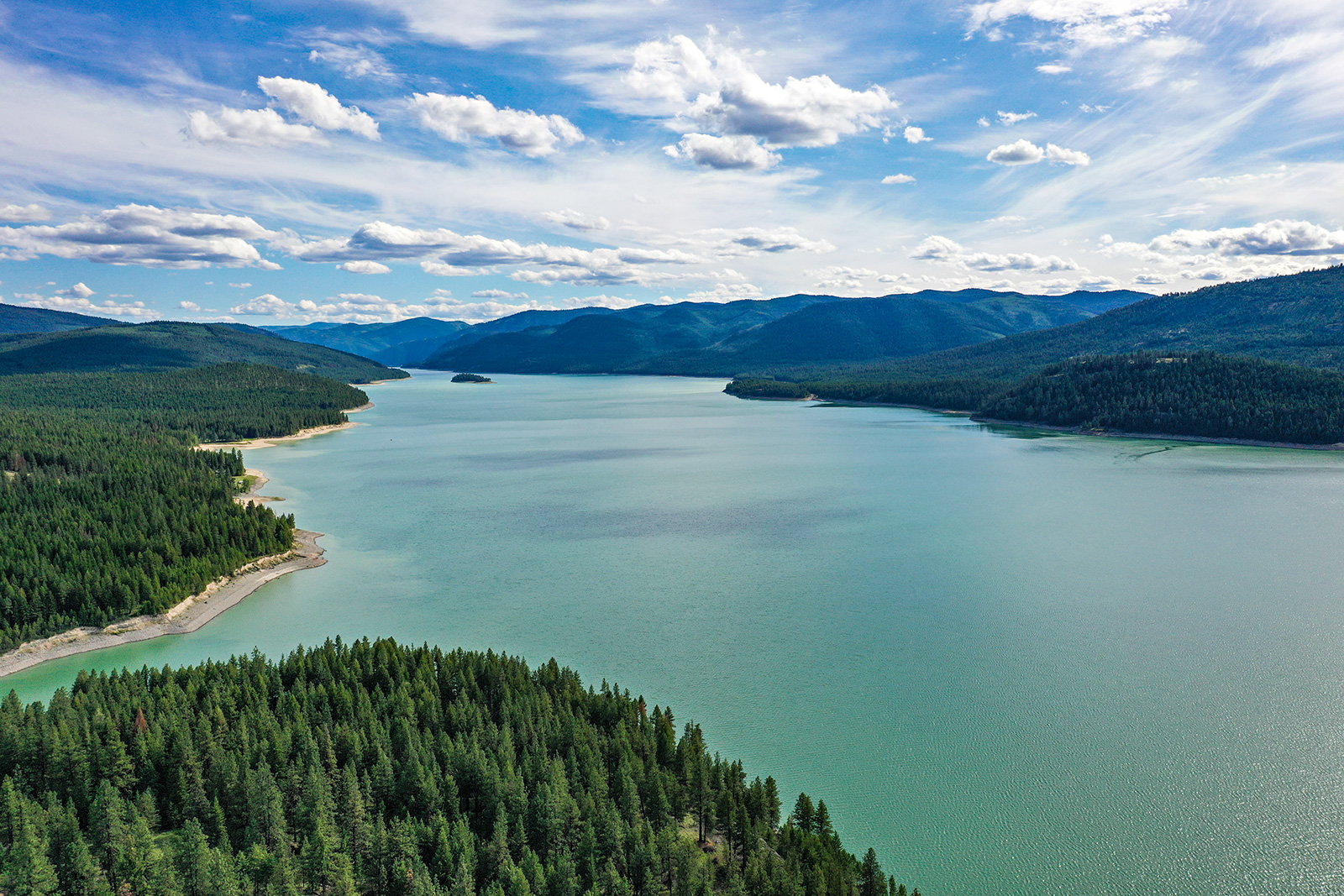U.S., Tribes Press Canada to Examine Kootenai Watershed Pollution
In an unprecedented request, the Biden administration has joined all six tribal governments in their push for an International Joint Commission reference on cross-border mine contamination
By Tristan Scott
The Biden administration has joined six tribal governments in Montana and British Columbia in an effort to prod Canada to agree to help resolve decades of cross-border coal mine contamination in the Kootenai River watershed.
According to a statement from the U.S. State Department, President Joe Biden supports a joint investigation of the mining byproduct selenium, which has contaminated the water quality, fish species and other aquatic life in the Kootenai River Basin and Lake Koocanusa spanning the boundary between British Columbia (B.C.) and Montana.
Earlier this month in Bonners Ferry, Idaho, representatives from the Department of State, the U.S. Environmental Protection Agency (EPA) and the U.S. Geological Survey (USGS) met with council members from the six governments of the transboundary Ktunaxa Nation, including the four Ktunaxa First Nation governments of B.C., the Kootenai Tribe of Idaho, and the Confederated Salish and Kootenai Tribes (CSKT). According to statements from the tribal and federal governments, the meeting centered on how to address B.C. mining pollution and mitigate its impacts on downstream resources, including traditional aboriginal territories.
“The meeting underscored the Biden-Harris Administration’s commitment to strengthening Nation-to-Nation relationships by listening to Tribal priorities and respecting Tribal sovereignty,” according to a prepared statement from State Department officials.
During the meeting, federal officials reaffirmed the Biden Administration’s support for a joint reference to the International Joint Commission (IJC) under the Boundary Waters Treaty of 1909 for the Kootenai Basin “regarding the transboundary impacts of mining,” according to the statement.
“A joint reference would respond to the need for impartial recommendations and transparent communication, build trust, and forge a common understanding of this issue among local, Indigenous, state, provincial, and federal governments as well as stakeholders and the public in both countries,” according to the statement.
The mounting pressure for an IJC reference comes as Canada’s largest diversified mining company, Teck Resources Limited, lays plans to expand its footprint by building new mines in the Elk River Valley, which flows into the Kootenay/Kootenai River and forms the Lake Koocanusa Reservoir at the international border separating Montana from B.C. The watershed has been beset by issues related to the mining contaminant selenium leaching into the rivers and impacting aquatic life.
Teck has spent hundreds of millions of dollars building three water quality treatment plants it says are designed to remove 95% of selenium from treated water; however, scientists say there isn’t any proven evidence to show the process is reversing or even stabilizing contamination trends at the U.S.-Canada border. Instead, the extent of the contamination appears to be even more widespread, with new data revealing concentrations of selenium in fish tissue that is higher than previously recorded.
Concerns over Teck’s Elk Valley operations have been brewing for more than a decade, prompting Montana and Idaho, as well as eight U.S. senators, the EPA, the USGS and six First Nations from both sides of the border have all said selenium released by the mines threaten fish in their downstream waters.
Canadian officials have been reluctant to engage in the binational negotiations, however, and in April Global Affairs Canada (GAC) notified Ktunaxa leaders it was rejecting an IJC reference proposal that had been taking shape after years of negotiations. GAC officials have since walked back the rejection, characterizing it as a “miscommunication,” according to Ktunaxa leaders and GAC officials. Despite the growing chorus for Canada to request IJC intervention, GAC still has not indicated whether it will pursue a reference.
Tribal leaders described the exchange with GAC as “a slap in the face,” particularly as the First Nation governments have been requesting IJC involvement since December 2021.
“The missing piece here is Canada’s seeming refusal to participate in a joint reference submission to get the ball rolling on viable, science-based, solutions,” Nasukin Heidi Gravelle, chief of the Tobacco Plains band of the Ktunaxa Nation, said. “It’s a disappointment, and a sad day for reconciliation, when progress on dealing with the pollution of our waterways is blocked by a Federal government claiming to be ‘committed to reconciliation’.”
In the U.S., both Montana and Idaho recently took steps to address the selenium problem by adopting their own site-specific water quality standard for selenium at the border, a protective value crafted through years of scientific work to safeguard fish species in Lake Koocanusa and the Kootenai River. The standard for dissolved selenium concentration established by of Idaho and Montana, and approved by the U.S. EPA, is 0.8 micrograms per liter on Lake Koocanusa and 3.1 micrograms per liter on the Kootenai River. Measurements of selenium have reached 9.46 micrograms per liter in the Elk River, 4.99 micrograms per liter in Lake Koocanusa, and 1.4 micrograms per liter in the Kootenai River.
All six members of the IJC are also on the record supporting a reference. Last month, they authored an unprecedented letter to Canadian Prime Minister Justin Trudeau and President Biden explaining they are prepared to act on a reference with or without GAC’s consent, even as they expressed a strong desire to have both nations come to the table.